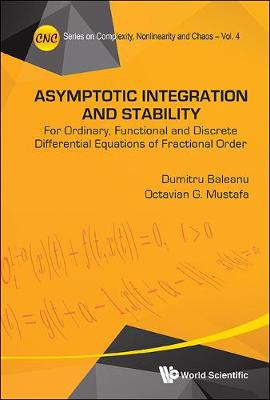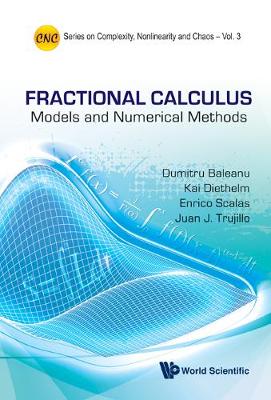Series on Complexity, Nonlinearity, and Chaos
2 primary works
Book 4
This volume presents several important and recent contributions to the emerging field of fractional differential equations in a self-contained manner. It deals with new results on existence, uniqueness and multiplicity, smoothness, asymptotic development, and stability of solutions. The new topics in the field of fractional calculus include also the Mittag-Leffler and Razumikhin stability, stability of a class of discrete fractional non-autonomous systems, asymptotic integration with a priori given coefficients, intervals of disconjugacy (non-oscillation), existence of Lp solutions for various linear, and nonlinear fractional differential equations.
Book 5
Fractional Calculus: Models And Numerical Methods
by Dumitru Baleanu, Kai Diethelm, Enrico Scalas, and Juan J Trujillo
Published 1 February 2012
The subject of fractional calculus and its applications (that is, convolution-type pseudo-differential operators including integrals and derivatives of any arbitrary real or complex order) has gained considerable popularity and importance during the past three decades or so, mainly due to its applications in diverse fields of science and engineering. These operators have been used to model problems with anomalous dynamics, however, they also are an effective tool as filters and controllers, and they can be applied to write complicated functions in terms of fractional integrals or derivatives of elementary functions, and so on.This book will give readers the possibility of finding very important mathematical tools for working with fractional models and solving fractional differential equations, such as a generalization of Stirling numbers in the framework of fractional calculus and a set of efficient numerical methods. Moreover, we will introduce some applied topics, in particular fractional variational methods which are used in physics, engineering or economics. We will also discuss the relationship between semi-Markov continuous-time random walks and the space-time fractional diffusion equation, which generalizes the usual theory relating random walks to the diffusion equation. These methods can be applied in finance, to model tick-by-tick (log)-price fluctuations, in insurance theory, to study ruin, as well as in macroeconomics as prototypical growth models.All these topics are complementary to what is dealt with in existing books on fractional calculus and its applications. This book was written with a trade-off in mind between full mathematical rigor and the needs of readers coming from different applied areas of science and engineering. In particular, the numerical methods listed in the book are presented in a readily accessible way that immediately allows the readers to implement them on a computer in a programming language of their choice. Numerical code is also provided.

